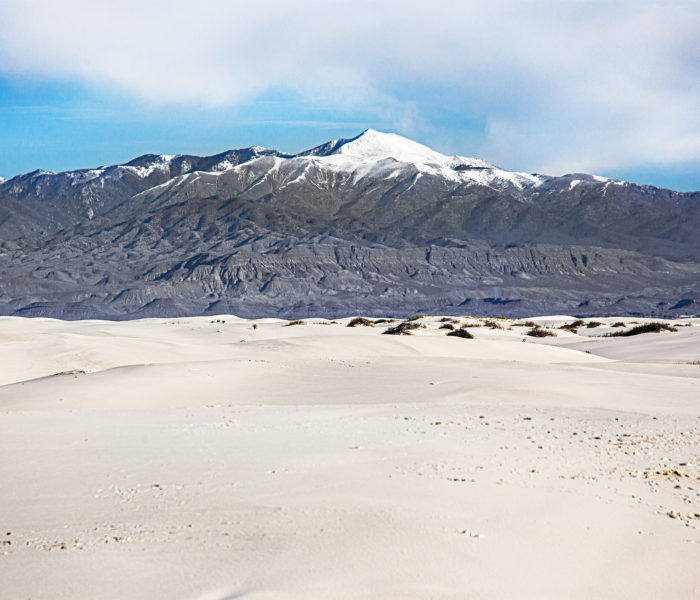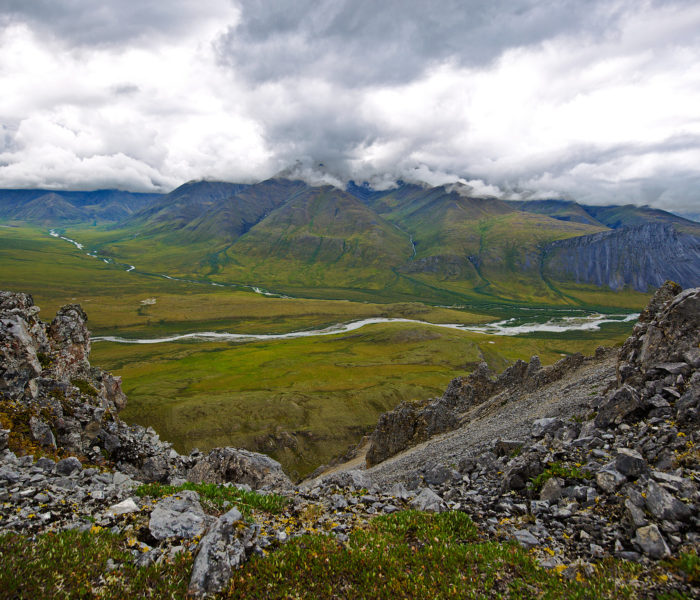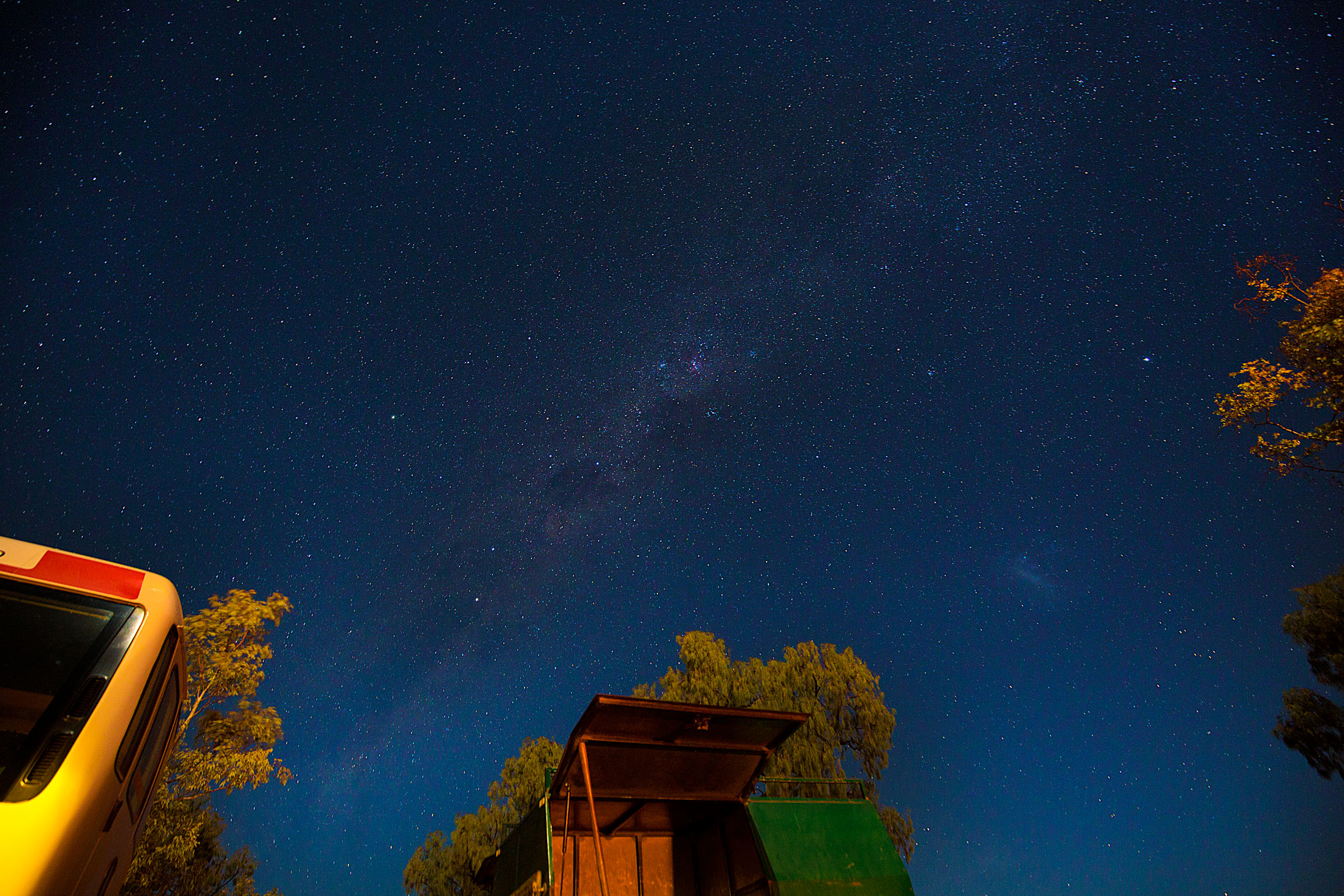
Journals #45, #46, and #47: The Outback
4/15/16-4/17/16
Cover Photo: “Written in the Stars”
Killer Animals Spotted: Basically surrounded at all times
**This is part 2 of 2 of my 5-day camping trip in the Australian Outback**
****Author’s Note: I read back my post after writing it and I realized it sounds a bit negative. In reality- the trip was 100% awesome is already a top 3 thing I’ve done over the past 2 months of traveling. I also failed to mention that I got to eat Camel burgers (average) and Kangaroo steaks (awesome). I may revise this post when I am more awake..
Me: “Hey- what are these footprints around my sleeping bag?”
Chris (Guide): “Oh- that’s from a Dingo. He probably just gave your face a good sniff when you were sleeping.”
We started the day early in Alice Springs-which was good, because trust me: there is nothing to do in Alice Springs. Your travel agent may try to talk you into spending a few days there to “check out some cute museum” but do NOT do it.
It also has to be one of the most transient places I’ve ever been to: for our overnight accommodation, our group was spread out throughout a big hostel in Alice Springs and I shared a room with 7 other people. All 8 of us arrived that afternoon and were gone by 5am the following morning.
Once we hit the road we began the roughly 350-mile trip to our first campsite: Kings Canyon. Along the way I discovered several interesting things about the Outback:
-There are almost a million wild camels in the Outback. They are not native, but were accidentally introduced about a hundred years ago and have rapidly reproduced.
-There are also wild horses- again, not native and released by accident
-Australia is one of the oldest landmasses in the world (if not the oldest) and many of the current rock formations are 100 of millions of years old (or 5,999 years old for my Christian audience).
One of these extremely old landmasses is King’s Canyon- which you can see in this picture here:
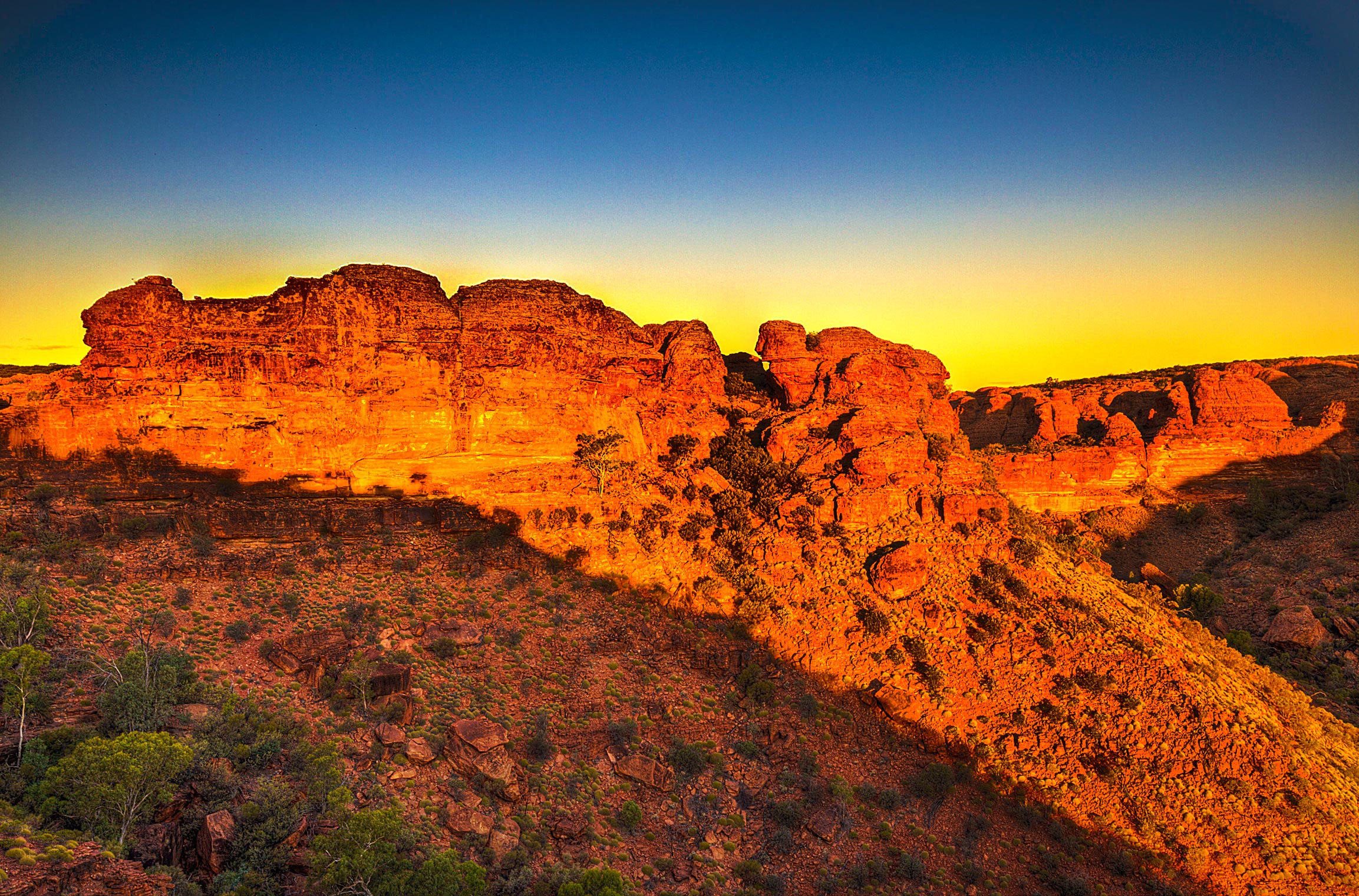
We did about a 3-hour hike there which was awesome (quick warning though: It is directly in the sun and can get extremely hot- so bring about 3x the water you normally would for a hike like this).
Another fun feature we were introduced to in the outback was the always present flies: starting at about 8am in the morning until it gets cooler again at around 5:30pm, there are flies swarming you everywhere. To clarify: by everywhere I mean that at any given time there are between 40-100 flies swarming around your body. To mitigate this- wear a fly net! Buy one in Darwin for $6 or wait until the last minute and buy a crappier one for $10 in the outback.
But I digress… as I mentioned, we were camping out in the outback. Now evidently, in traditional Australian camping you do not use tents. Instead you use what are called “Swags”- which is basically a cover and mattress for a sleeping bag (in other words- I slept outside on the ground). According to our guide, Chris, this is pretty safe because most of the dangerous animals hate the cold (at least that’s the part of the explanation I understood).
One animal that does show up at night though is the Dingo- you may remember this photo of one from an earlier blog post (this one is in captivity, so imagine the wild ones being a bit smaller and more mangy):
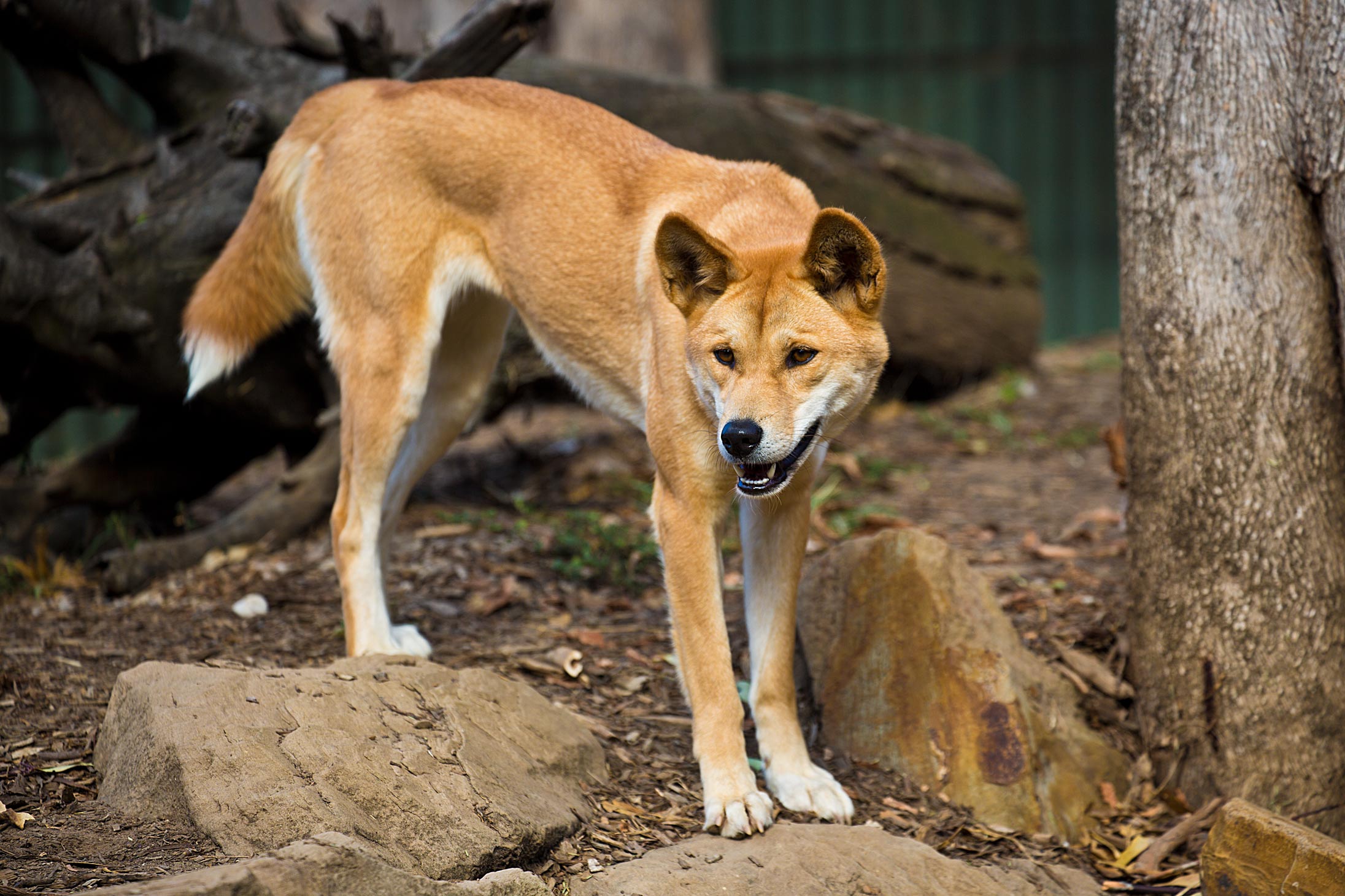
Dingos are a cross between a wild dog and a wolf and at night I could hear packs of them howling into the night. Also, basically as soon as we put our fire out, they started patrolling the edges of our camp. Dingos are primarily scavengers (kind of like a Hyena), so their main targets are food that’s been left out and for one reason or another, shoes (Chris warned us that if we left our hiking boots out in the open, Dingos will steal them).
One of them also evidently came up and sniffed my face during the night- a common practice according to Chris.
On of the positive side, sleeping out in the open provided epic views of the stars. Here’s one more photo I took of the stars from our campsite:
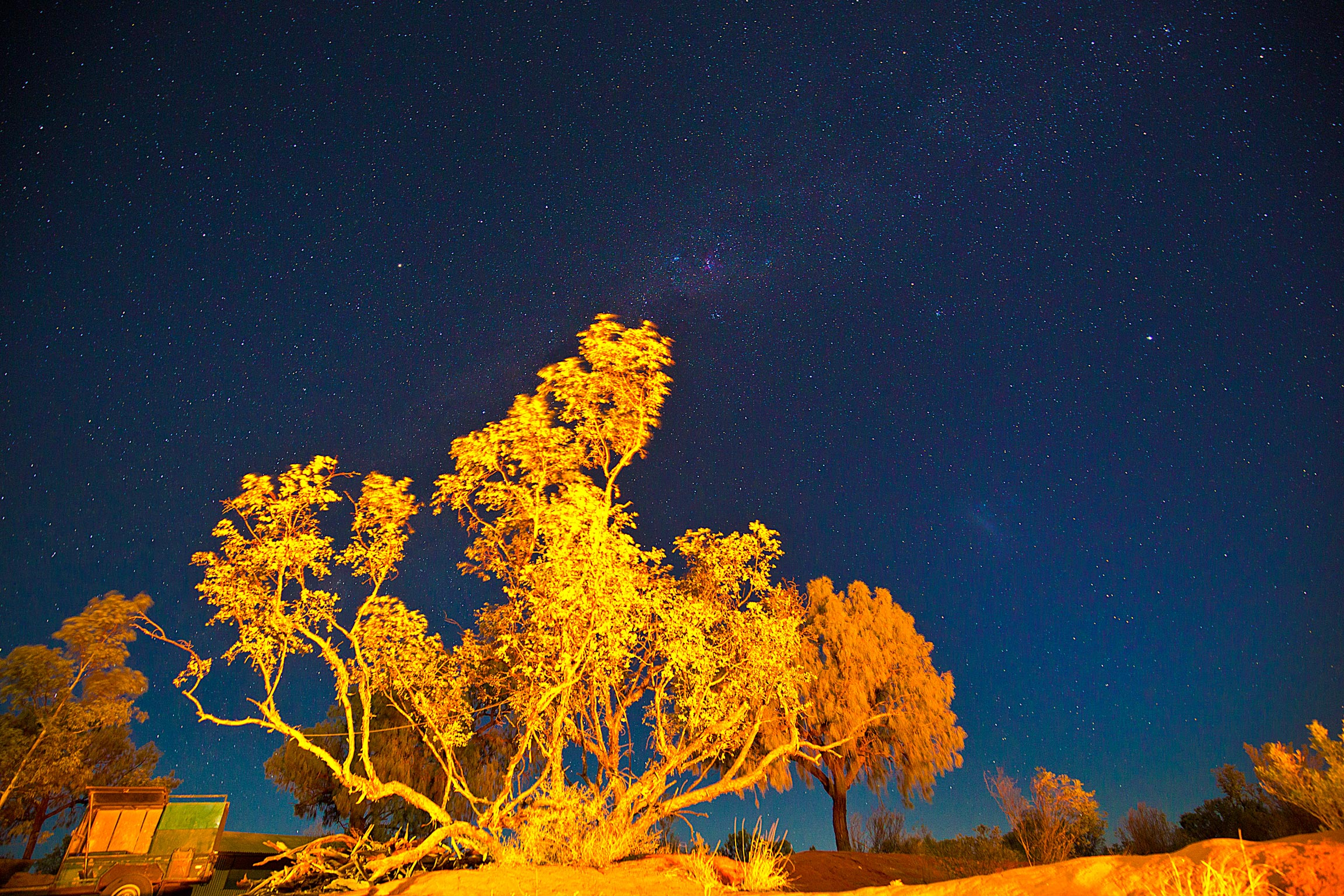
The next day we got up early to drive roughly 200 miles to one of the most famous landmarks in all of Australia: Uluru (formerly known as “Ayer’s Rock). We hiked around the base of it in the morning, and then came back to watch the sunrise there:
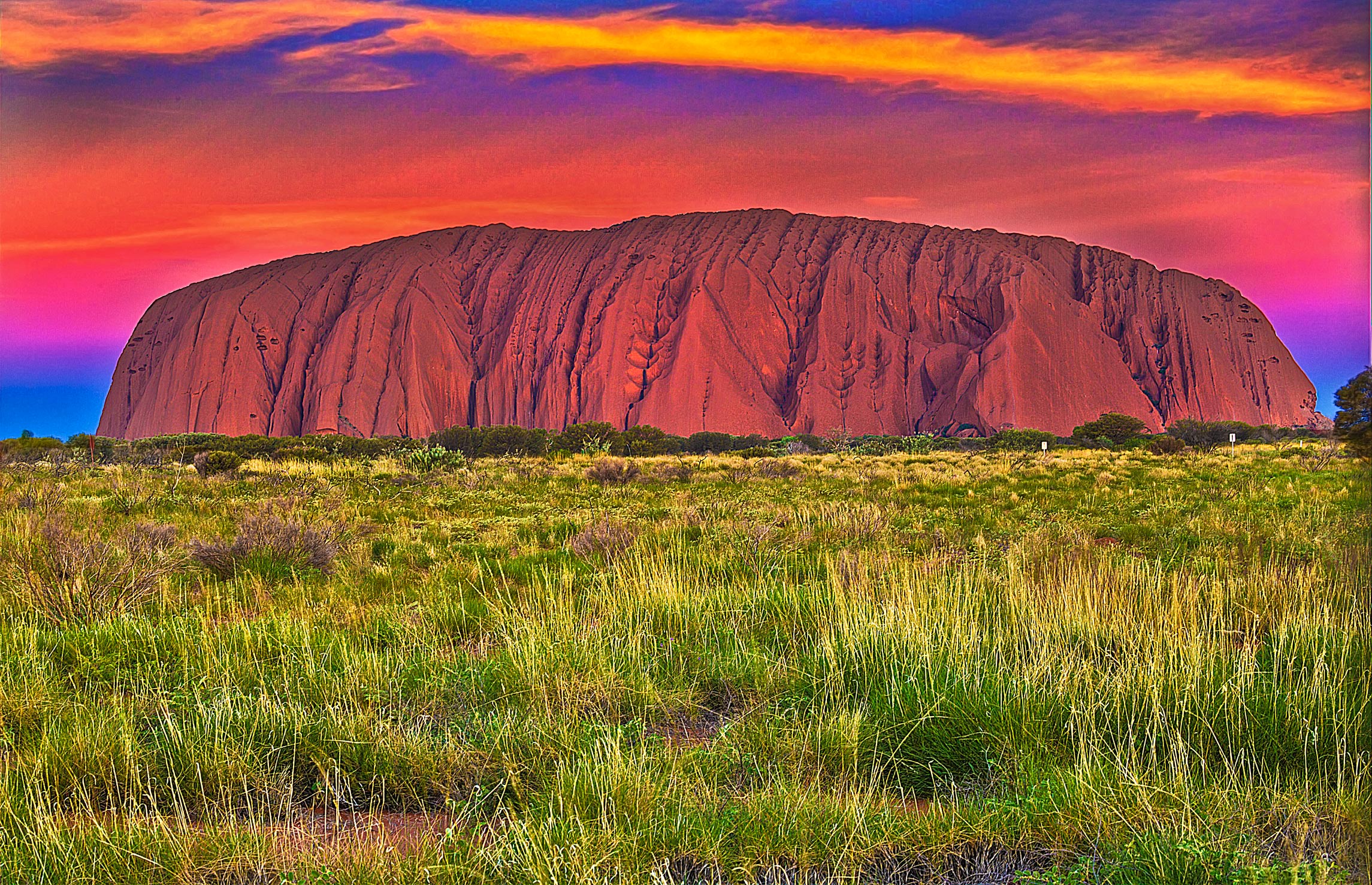
After that we camped one more night in our Swags, got up to watch the sunrise at Uluru, and then finally began the long drive back to Alice Springs.
It’s about 10pm my time right now (in Alice Springs) and I’m due to fly to Melbourne tomorrow. I will likely miss one day of blogging, then be back with a full report on my first 1.5 days in Melbourne!
Cheers,
MB
Categories: Australia, The Outback


